Alex KURTAGIC
Ex: http://www.counter-currents.com/
Adam Fergusson
When Money Dies: The Nightmare of Deficit Spending, Devaluation, and Hyperinflation in Weimar Germany
Old Street Publishing, 2010
Warren Buffett recommendations notwithstanding, it says something about the state of our economy when someone decides it is time to resurrect a 35-year-old account of the Weimar-era hyperinflation.
Written during the stagflationary 1970s, Adam Fergusson’s When Money Dies: The Nightmare of the Weimar Hyperinflation contains much to titillate our morbid curiosity, besides an instructive illustration of what we can expect should the Austrian economists’ gloomiest prophecies ever come true. (The book, long out of print, was fetching close to $700 on eBay this summer, and has now been made available in electronic format.)
Defined in the present text as occurring when the rate of inflation exceeds 50 percent per month, hyperinflation is caused by an uncontrolled increase in the money supply and a loss of confidence in the currency. Because of the absence of a tendency towards equilibrium, fear of the rapid and continuous loss of value makes people unwilling to hold on to the money for any longer than is necessary to convert it into tangible goods or services. Hyperinflation is therefore characterized by very rapid depreciation and a dramatic increase in the velocity of the circulation of money.
Although the most famous (because it was the first to have been systematically observed and because it was deemed to have made Hitler possible), the hyperinflation of Weimar-era Germany, where Papiermark-denominated prices came to double every 3.7 days, takes “only” fourth place in the hyperinflationary hall of fame. The first place belongs to post-World War II Hungary, where in July 1946 pengő-denominated prices doubled every 15 hours. The second place belongs to Mugabe-era Zimbabwe, where in November 2008 Zimbabwean dollar-denominated prices doubled every 24.7 hours. And the third place belongs to Balkans War-era Yugoslavia, where in January 1994 Yugoslav dinar-denominated prices doubled every 1.4 days.
In Germany the inflationary cycle had already begun during World War I, when the paper mark went from 20 to the pound (at the time worth around 4 dollars) to 43 to the pound by war’s end. Although the paper mark continued tumbling downward, spiking momentarily in the first quarter of 1920, it recovered somewhat afterwards and remained more or less stable until the first half of 1921. The London Ultimatum, however, which demanded war reparations to be paid in gold marks to the tune of 2,000,000,000 per annum, plus 26 per cent of the value of German exports, triggered a new leg of rapid depreciation. The French policy towards Germany, backed by the British, was virulently vengeful, and imposed an onerous burden on Germany’s economy: in fact, the amount demanded was in excess of Germany’s total holding of gold or foreign exchange. The deficit in the budget, of which reparations contributed a third, was made up by discounting government Treasury bills and printing money.
Despite a momentary respite during the first half of 1922, during which international reparations conferences caused the paper mark to stabilize at around 320 to the dollar, the lack of an agreement triggered a new crisis, resulting in a phase of hyperinflation. Fuelled by the German government’s policy of passive resistance to French occupation of the Ruhr, which from January 1923 meant subsidizing through money-printing an anti-occupation strike by German workers, said hyperinflation escalated exponentially until November that year, when the introduction of the Rentenmark finally stopped the economic rot. By that time the German currency had fallen to 4,200,000,000,000 paper marks to the dollar.
Fergusson attributed the extraordinary self-inflicted destruction of Germany’s monetary system to a failure on the part of its government and the Reichsbank to link currency depreciation to money printing. Depreciation was initially believed to have been the result of the Entente powers forcing up foreign exchange through market manipulations. The German public appeared equally ignorant, believing that prices were going up as opposed to the value of their currency going down. Anti-Semitic explanations, not refuted by visible examples of vulgar Jewish ostentation, financial acrobatics, and profiteering, were also popular. The consequent misery and economic chaos showed the weaknesses of the chartalist monetary standard.
Combining a clear exposition with contemporary private diary entries, When Money Dies offers a harrowing narrative. The Weimar inflation obliterated savings, devoured wages, and caused assets to be distributed in the most unfair ways imaginable. As the wealthy had the means to protect themselves and even take advantage of the situation, and as the working class was organized and able to secure wage increases through frequent strikes and union demands, the main victims were the middle class — professionals, civil servants, the rentier class, and those on fixed incomes, who were reduced to penury and destitution. Landlords were also affected as a result of government-imposed rent controls.
The industrialist class, on the other hand, was not unhappy with the inflation, as they benefited from it. Indeed, some industrialists and profiteers made fortunes at everyone’s expense. Individual industrialists were able to acquire assets (usually fixed assets and raw materials) for minuscule amounts by securing large bank loans that became virtually worthless within weeks because of the low interest rates. Said industrialists also welcomed the virtual destruction of fiscal burdens: high inflation also made tax assessments worthless by the time taxes were due.
One of the effects of inflation was to turn everyone into a speculator — in the stock market, in foreign exchange, in commodities, and in assets, which offered protection from depreciation as well as profit opportunities. Foreign visitors in Germany were also able to take advantage of a notable differential between the official rate of foreign exchange and prices in real terms within Germany, where in relation to solid currencies like the dollar and the pound goods and services were available at bargain prices.
For most of the inflationary period Germany enjoyed full employment, but the incentive to work hard and save was progressively eroded by the increasing fugacity of purchasing power. The main concern was somehow keeping ahead of the mark’s accelerating depreciation, so as to be able to still obtain the necessities of life. Payday had to come with increasing frequency, and finally daily in order to keep up with prices, which rose with increasing rapidity until they changed by the hour. Part of the rise was due to the need to factor in depreciation occurring between the time the money was paid to the merchant and the time the merchant was able to dispose of it. It became the norm to spend money as quickly as it was obtained and for shops to sell out in a single day. Coffees were ordered two at a time, to avoid having to pay more for any second cup. Barter, bribes, and corruption also became universal.
Despite the prodigious nominal amounts, people’s main problem during this period was a chronic scarcity of money. Dozens of paper mills and printing firms and thousands of printing machines working night and day could not keep up with prices, causing the total amount of money in circulation constantly to decrease in real terms. Obviously, the more furious the money printing, the more acute the rate of depreciation, but his was something apparently not understood by Rudolf Havenstein, the president of the Reichsbank (German central bank), whose main preoccupation was ensuring there was enough money available to meet economic needs. Depreciation accelerated to such a degree that it eventually made more sense directly to burn money in the stove than first use it to purchase wood.
The scarcity of money was reflected in the government’s budget, which dwindled to paltry amounts in real terms, further aided by the breakdown of the taxation system and the ridiculously low price of stamps and railway fares. By the end of the hyperinflationary cycle, the government’s income was a fraction of 1 percent of its outgoings.
Food became progressively scarce as a result of hoarding and the refusal by farmers to sell their produce against worthless paper. Farmers were, in fact, relatively well off until almost the end, as they were able to produce their own food. City-dwellers were forced to sell their possessions in exchange for comestibles, and those visiting friends or relatives witnessed the latter’s flats gradually emptying of furniture, paintings, and any movable asset of value. Once these were gone, looting and farm raids was the next step for some. For others it was starvation and death.
The highest denomination note, issued towards the end of 1923, was 100,000,000,000,000 marks (compare with Hungary’s 100,000,000,000,000,000,000 pengő note in 1946). By this time, Dr. Havenstein had the equivalent of 300 ten-tonne train wagons of unissued bank notes awaiting distribution for the day. The mark, however, had become not only worthless but largely shunned in favour of foreign currencies and tangible assets. Also in circulation were not only the official Papiermark issued by the central bank but also emergency money issued by municipalities, local banks, and even private firms in the effort to make up for money shortages. Such an environment had made it impossible to ascertain with precision the value of anything, as sellers used their own indexes and asked whatever they thought they could get people to pay for their goods or services. The chaos and economic breakdown was so complete that Germany by late 1923 was on the verge dismemberment, with the republic having long been under siege from both Communists and the Far Right. Hitler, who attempted his Beer Hall Putsch in November that year, was among the agitators.
The death of Dr. Havenstein and the appointment of Dr. Hjalmar Schacht, marked the end of Weimar hyperinflation. This occurred under the auspices of a military dictatorship, comprised of Hans von Streisser, Otto von Lossow, and Gustav von Kahr, appointed by Prime Minister Eugen von Knilling, who, following a period of political violence an assassinations had declared martial law in September 1923. The discounting of Treasury bills was stopped and the Rentenmark — a temporary currency — was introduced at the rate of 1,000,000,000,000 Papiermark to 1 Rentenmark; also, debts were largely rescinded, unfairly to the detriment of many. Somehow, the confidence trick worked and a semblance of normality returned. Unfortunately, however, the price of stopping hyperinflation was steep and known in advance: mass unemployment, a sharp economic slowdown, and bankruptcies. The hyperinflation was allowed to carry on as long as it did partly because of an absence of political will to swallow the necessary bitter medicine.
Among the casualties were some of the industrialists and profiteers who were caught out in the hyperinflationary game of musical chairs once the currency reform was enacted. Those who survived and had benefited from the economic conditions were forced to adjust to the dull world of hard work, thrift, small profits, and taxes. Some, like the Jewish-Lithuanian Barmat brothers, still managed to exploit the situation to their advantage: they converted their assets into the new, strong mark and issued loans at extortionate rates of interest (of up to 100 percent) while credit was nearly impossible to find elsewhere. Hyperinflation had bred universal corruption, however — a world of dog-eat-dog rapacity, opportunism, and pauperized billionaires, where the worst human instincts flourished and became a matter of survival.
The post-hyperinflationary credit crunch was, not surprisingly followed by a credit boom: starved of money and basic necessities for so long (do not forget the hyperinflation had come directly after defeat in The Great War), many funded lavish lifestyles through borrowing during the second half of the 1920s. We know how that ended, of course: in The Great Depression, which eventually saw the end of the Weimar Republic and the beginning of the National Socialist era.
From the vantage-point of 2010, we see glimpses in Fergusson’s account of the way events might play out in the United States and possibly Western Europe in the coming years, absent any political will to tackle the mountain of public and private debt, the enormous budget deficits, and the stupendous above-growth monetary expansion of the past decade. The crises are likely to be similar in kind, but follow a different order. The credit boom of the 2000s has been followed by the credit crunch of the late 2000s. Analysts of the Austrian school deem us to be in the initial stages of a Second Great Depression, and vaticinate much worse to come.
Personally, I sometimes get tired of the unrelenting pessimism coming from some Austrian-influenced quarters, and wonder whether there is not a morbid curiosity there — untempered by personal experience — to witness a catastrophic collapse; but, all the same, I am not going to take chances and risk losing the little I have because I was bored by the truculent fantasies of some cleverer-than-thou commentators. When Money Dies is well worth reading if you are searching for a real-life overview of the sequence of weird phenomena that emerge during a inflationary cycle. Those who can would be well advised to use it and related texts to design in advance coping strategies in the event of monetary failure.
PS: For a fictional preview of what a hyperinflationary blowout might look like in Europe and the United States in 2022, see my novel Mister (Iron Sky Publishing, 2009).
Source: http://www.wermodandwermod.com/newsitems/news130120111511.html


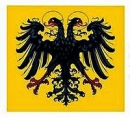
.jpg)

 del.icio.us
del.icio.us
 Digg
Digg
.jpg)
![[Tribune libre] Arnaud Gouillon : la république française est-elle compatible avec l’identité française ? [Tribune libre] Arnaud Gouillon : la république française est-elle compatible avec l’identité française ?](http://fr.novopress.info/wp-content/uploads/2011/02/logo_rf-300x175.png) La République est un système de gouvernement, une forme d’organisation politique. Notre pays en a connu d’autres : Empire, féodalité, monarchie absolue, monarchie constitutionnelle, consulat… Et il n’est pas exclu que d’autres formes apparaissent demain. La République, elle-même, n’est pas un bloc. Il existe ou a existé dans le monde de nombreuses formes de république. Il en a existé cinq en France, avec des Constitutions parfois très différentes. Cependant, il convient de distinguer la république, système de gouvernement, de la république, concept politique construisant une idéologie à vocation totalitaire. C’est le cas en France où l’idéologie « républicaine » apparue en 1789 n’a de « républicain » que le nom et sert, en fait, à masquer la destruction méthodique, au XIXème siècle des identités régionales, et, depuis 40 ans, de l’identité nationale.
La République est un système de gouvernement, une forme d’organisation politique. Notre pays en a connu d’autres : Empire, féodalité, monarchie absolue, monarchie constitutionnelle, consulat… Et il n’est pas exclu que d’autres formes apparaissent demain. La République, elle-même, n’est pas un bloc. Il existe ou a existé dans le monde de nombreuses formes de république. Il en a existé cinq en France, avec des Constitutions parfois très différentes. Cependant, il convient de distinguer la république, système de gouvernement, de la république, concept politique construisant une idéologie à vocation totalitaire. C’est le cas en France où l’idéologie « républicaine » apparue en 1789 n’a de « républicain » que le nom et sert, en fait, à masquer la destruction méthodique, au XIXème siècle des identités régionales, et, depuis 40 ans, de l’identité nationale.
 Je trouve qu’une vie intéressante est une vie où l’on se bat, où l’on souffre, où l’on affronte l’adversité, et surtout, où l’on s’affronte soi-même. Je trouve qu’une vie intéressante est une vie difficile. C’est ce qui me donne de la joie, en tout cas, et peut-être de l’espérance ; je me dis que quand je partirai, couché sur un lit à regarder le plafond en sentant le froid qui remonte de mes pieds vers mon cœur, je pourrai dire au patron, dont je suppose qu’il m’attend de l’autre côté : j’ai joué ma partition, maintenant, tu décides pour la suite. Je trouve que ce qui rend la vie intéressante, c’est de se battre pour en arriver là : savoir qu’on a lutté.
Je trouve qu’une vie intéressante est une vie où l’on se bat, où l’on souffre, où l’on affronte l’adversité, et surtout, où l’on s’affronte soi-même. Je trouve qu’une vie intéressante est une vie difficile. C’est ce qui me donne de la joie, en tout cas, et peut-être de l’espérance ; je me dis que quand je partirai, couché sur un lit à regarder le plafond en sentant le froid qui remonte de mes pieds vers mon cœur, je pourrai dire au patron, dont je suppose qu’il m’attend de l’autre côté : j’ai joué ma partition, maintenant, tu décides pour la suite. Je trouve que ce qui rend la vie intéressante, c’est de se battre pour en arriver là : savoir qu’on a lutté. Il suo nome ai più non dirà molto. Ma Niccolò Giani fu uno dei più importanti, radicali e oltranzisti esponenti del Fascismo rivoluzionario. Fu, infatti, tra i fondatori, nonché uno dei massimi rappresentanti, della Scuola di Mistica Fascista (SMF). Vissuto il suo ideale fino all’ultimo respiro, morì combattendo sul fronte greco nel 1941, ricevendo, per l’esempio offerto, la medaglia d’oro al valore. Tutto questo, mentre molti “fascisti” – le virgolette sono d’obbligo – s’imboscavano in patria, nascondendosi dietro la retorica di vuoti slogan e sterili parole d’ordine. Quegli stessi che, dopo il 1945, seppero bene in che direzione riciclarsi.
Il suo nome ai più non dirà molto. Ma Niccolò Giani fu uno dei più importanti, radicali e oltranzisti esponenti del Fascismo rivoluzionario. Fu, infatti, tra i fondatori, nonché uno dei massimi rappresentanti, della Scuola di Mistica Fascista (SMF). Vissuto il suo ideale fino all’ultimo respiro, morì combattendo sul fronte greco nel 1941, ricevendo, per l’esempio offerto, la medaglia d’oro al valore. Tutto questo, mentre molti “fascisti” – le virgolette sono d’obbligo – s’imboscavano in patria, nascondendosi dietro la retorica di vuoti slogan e sterili parole d’ordine. Quegli stessi che, dopo il 1945, seppero bene in che direzione riciclarsi.

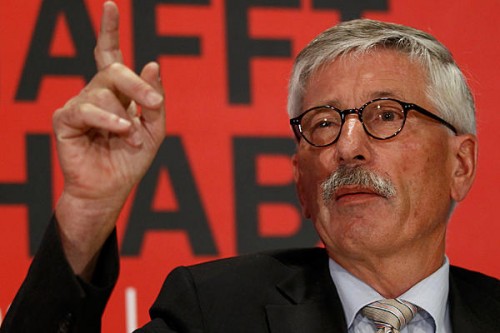
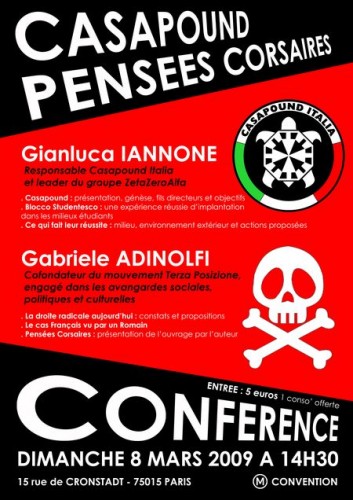 HET NATIONALISME in Italië kent sinds enkele jaren een zeer vernieuwende militante, intellectuele en artistieke activiteit die zich heel uitdrukkelijk op het fascisme beroept. Precies zeven jaar geleden, op 26 december 2003, beslisten jonge Romeinse neofascistische militanten om een leegstaand gebouw in te nemen volgens de door de Italiaanse revolutionaire rechterzijde ontwikkelde strategie van de zogenaamde "Non-conforme bezetting / Bezetting met het oog op huisvesting" (ONC/OSA). "Non-conformiteit" is de duidelijke eis waarmee ze de politieke correctheid over alle onderwerpen afwijst; een eis verheven tot de rang van ware filosofie. De bezetting was erop gericht om de neofascistische jeugd in Rome te voorzien van een ruimte waar ze het sociale en culturele alternatief zou kunnen organiseren dat ze tot dusver moest missen.
HET NATIONALISME in Italië kent sinds enkele jaren een zeer vernieuwende militante, intellectuele en artistieke activiteit die zich heel uitdrukkelijk op het fascisme beroept. Precies zeven jaar geleden, op 26 december 2003, beslisten jonge Romeinse neofascistische militanten om een leegstaand gebouw in te nemen volgens de door de Italiaanse revolutionaire rechterzijde ontwikkelde strategie van de zogenaamde "Non-conforme bezetting / Bezetting met het oog op huisvesting" (ONC/OSA). "Non-conformiteit" is de duidelijke eis waarmee ze de politieke correctheid over alle onderwerpen afwijst; een eis verheven tot de rang van ware filosofie. De bezetting was erop gericht om de neofascistische jeugd in Rome te voorzien van een ruimte waar ze het sociale en culturele alternatief zou kunnen organiseren dat ze tot dusver moest missen.  Op artistiek gebied herneemt Casapound in zijn publicaties en affiches de esthetiek van de Italiaanse futuristen uit de jaren ‘20, toen het esthetische uitstalraam van het nationalisme op het schiereiland. Ruimte dus voor de rechte lijnen, de hoeken, de beweging als evocatie van de actie, de energie en de durf, maar ook voor alles wat kan verwijzen naar het heldendom, voorgesteld als opperste deugd van een dagelijkse levenskunst. De boekenwinkel “Testa di Ferro” biedt de werken aan van de grote intellectuele en politieke figuren van de conservatieve revolutie, van Codreanu over Mishima tot Nietzsche. Er zijn ook meer sulfureuze auteurs als Hitler en natuurlijk Mussolini. Opgehangen aan de theorie van het “mediatieke squadrisme”, d.w.z. spectaculaire blits-acties om de leidmotieven van de beweging te verspreiden en indruk te maken op politieke vijanden. Casapound heeft trouwens zijn eigen artistieke beweging: het “turbodynamisme”. Een van de eerste uitvoeringen van deze alternatieve en non-conformistische kunstschool was een retroprojectie van enorme portretten van Robert Brasillach op de muren van Rome. De affiches van Casapound, die vergaderingen, concerten en andere bijeenkomsten aankondigen, worden ook ontworpen volgens die wil om de fascistische esthetiek bijdetijds te maken met de nieuwe creatieve middelen die door de computer worden aangeboden. De scherpste geometrische vormen worden in zwart-wit geplaatst met de portretten van grote mannen uit de geschiedenis van het nationalisme, terwijl ze vrijheid, verbeeldingskracht, kameraadschap en strijdlust verheerlijken. Deze posters zijn nu gemeengoed in sommige delen van Rome en aanvaard door de bevolking. De term "fascistisch" is er normaal geworden dankzij de propaganda-inspanning van Casapound. De stad van de Caesars knoopt geleidelijk aan weer aan met zijn grote politieke traditie, die opnieuw tot leven is gewekt door de jonge generatie. Verlangend om het hart te zijn van een cultureel alternatief voor het conformisme van de burgerlijke linker- en rechterzijde, biedt Casapound verschillende kunstenaars tentoonstellingsruimtes aan, evenals een kunsttijdschrift. "De droom vernieuwen", dat is de voortdurende motivatie van de militanten die onophoudelijk blijven vernieuwen op alle gebieden. Kunst en muziek zijn de twee machtige instrumenten die deze ontwikkeling mogelijk maken; ze bereiken de meeste mensen, in het bijzonder de jongeren.
Op artistiek gebied herneemt Casapound in zijn publicaties en affiches de esthetiek van de Italiaanse futuristen uit de jaren ‘20, toen het esthetische uitstalraam van het nationalisme op het schiereiland. Ruimte dus voor de rechte lijnen, de hoeken, de beweging als evocatie van de actie, de energie en de durf, maar ook voor alles wat kan verwijzen naar het heldendom, voorgesteld als opperste deugd van een dagelijkse levenskunst. De boekenwinkel “Testa di Ferro” biedt de werken aan van de grote intellectuele en politieke figuren van de conservatieve revolutie, van Codreanu over Mishima tot Nietzsche. Er zijn ook meer sulfureuze auteurs als Hitler en natuurlijk Mussolini. Opgehangen aan de theorie van het “mediatieke squadrisme”, d.w.z. spectaculaire blits-acties om de leidmotieven van de beweging te verspreiden en indruk te maken op politieke vijanden. Casapound heeft trouwens zijn eigen artistieke beweging: het “turbodynamisme”. Een van de eerste uitvoeringen van deze alternatieve en non-conformistische kunstschool was een retroprojectie van enorme portretten van Robert Brasillach op de muren van Rome. De affiches van Casapound, die vergaderingen, concerten en andere bijeenkomsten aankondigen, worden ook ontworpen volgens die wil om de fascistische esthetiek bijdetijds te maken met de nieuwe creatieve middelen die door de computer worden aangeboden. De scherpste geometrische vormen worden in zwart-wit geplaatst met de portretten van grote mannen uit de geschiedenis van het nationalisme, terwijl ze vrijheid, verbeeldingskracht, kameraadschap en strijdlust verheerlijken. Deze posters zijn nu gemeengoed in sommige delen van Rome en aanvaard door de bevolking. De term "fascistisch" is er normaal geworden dankzij de propaganda-inspanning van Casapound. De stad van de Caesars knoopt geleidelijk aan weer aan met zijn grote politieke traditie, die opnieuw tot leven is gewekt door de jonge generatie. Verlangend om het hart te zijn van een cultureel alternatief voor het conformisme van de burgerlijke linker- en rechterzijde, biedt Casapound verschillende kunstenaars tentoonstellingsruimtes aan, evenals een kunsttijdschrift. "De droom vernieuwen", dat is de voortdurende motivatie van de militanten die onophoudelijk blijven vernieuwen op alle gebieden. Kunst en muziek zijn de twee machtige instrumenten die deze ontwikkeling mogelijk maken; ze bereiken de meeste mensen, in het bijzonder de jongeren. Casapound weigert mee te doen met het spel van de partijen. De vereniging ziet die laatste als een rem op elke durf, omdat ze in naam van de verkiezingen verplicht zijn zich gematigder op te stellen. Bevrijd van elke gedwongenheid op dit gebied is haar vrijheid des te groter. De vereniging heeft een maandblad: “Occidentale”. Een van de boegbeelden van dat blad is Gabriele Adinolfi; hij leidt ook het Studiecentrum Polaris, waarmee hij vernieuwende politieke voorstellen ontwikkelt. Hij legt ons uit dat zijn strategie aangepast is aan elke doelgroep. Op zijn site “noreporter.org” legt hij zich enkel toe op de actualiteit, daar waar Polaris liever geschiedenis behandelt – en in het bijzonder die van de Tweede Wereldoorlog, maar dan wel herzien en verbeterd. In zijn lezingen voor Casapound biedt hij zijn raad aan als ervaren fascistische militant; Gabriele Adinolfi heeft 20 jaar in Franse ballingschap moeten leven vanwege zijn engagement tijdens de “loden jaren” in Italië. De meest veelbetekenende doorbraak is misschien die van het Blocco Studentesco – de studentenformatie van Casapound – dat in 2010 bijna 40% van de stemmen in de Romeinse onderwijsinstellingen verzamelde en dit terwijl het zich openlijk op het fascisme beroept. Het is de gewoonste zaak geworden om jongeren van vijftien en zestien jaar, afkomstig uit de volksbuurten, elkaar de Romeinse groet te zien brengen. Begin december verzamelde het Blocco Studentesco drieduizend betogers in de hoofdstad tegen een hervorming van het openbare onderwijs. De stem van Blocco Studentesco is overheersend geworden tegenover een linkse (communistische of sociaaldemocratische) studentenbeweging die niet bij machte is om de algemene trend te stuiten. De vreugde, de jeugd, de scheppingskracht zijn de basisprincipes van een bijna militair gestructureerde beweging. Door de oranje en okeren straten van Rome stapt voortaan een jeugd die opnieuw fier met de zwarte vlag zwaait en zich beroept op de prestigieuze herinnering aan de Romeinse Republiek en haar geestelijke erfgenaam, die het fascisme is. De snelle en organische uitbreiding van Casapound Italia laat een glimp zien van de spectaculaire ideologische en culturele successen binnen de nieuwe Italiaanse generatie. Zoals Gabriele Adinolfi zegt: “Nooit sinds mijn geboorte is het fascisme zo populair geweest in de Italiaanse publieke opinie”. De oogst zal ongetwijfeld gaan naar diegenen die zich aandienen als de “fascisten van het derde millennium” en aantonen dat de dageraard zal komen met een gezonde, verstandige, hedendaagse en onbuigzame radicaliteit. Lange leve Casapound en de camerati!
Casapound weigert mee te doen met het spel van de partijen. De vereniging ziet die laatste als een rem op elke durf, omdat ze in naam van de verkiezingen verplicht zijn zich gematigder op te stellen. Bevrijd van elke gedwongenheid op dit gebied is haar vrijheid des te groter. De vereniging heeft een maandblad: “Occidentale”. Een van de boegbeelden van dat blad is Gabriele Adinolfi; hij leidt ook het Studiecentrum Polaris, waarmee hij vernieuwende politieke voorstellen ontwikkelt. Hij legt ons uit dat zijn strategie aangepast is aan elke doelgroep. Op zijn site “noreporter.org” legt hij zich enkel toe op de actualiteit, daar waar Polaris liever geschiedenis behandelt – en in het bijzonder die van de Tweede Wereldoorlog, maar dan wel herzien en verbeterd. In zijn lezingen voor Casapound biedt hij zijn raad aan als ervaren fascistische militant; Gabriele Adinolfi heeft 20 jaar in Franse ballingschap moeten leven vanwege zijn engagement tijdens de “loden jaren” in Italië. De meest veelbetekenende doorbraak is misschien die van het Blocco Studentesco – de studentenformatie van Casapound – dat in 2010 bijna 40% van de stemmen in de Romeinse onderwijsinstellingen verzamelde en dit terwijl het zich openlijk op het fascisme beroept. Het is de gewoonste zaak geworden om jongeren van vijftien en zestien jaar, afkomstig uit de volksbuurten, elkaar de Romeinse groet te zien brengen. Begin december verzamelde het Blocco Studentesco drieduizend betogers in de hoofdstad tegen een hervorming van het openbare onderwijs. De stem van Blocco Studentesco is overheersend geworden tegenover een linkse (communistische of sociaaldemocratische) studentenbeweging die niet bij machte is om de algemene trend te stuiten. De vreugde, de jeugd, de scheppingskracht zijn de basisprincipes van een bijna militair gestructureerde beweging. Door de oranje en okeren straten van Rome stapt voortaan een jeugd die opnieuw fier met de zwarte vlag zwaait en zich beroept op de prestigieuze herinnering aan de Romeinse Republiek en haar geestelijke erfgenaam, die het fascisme is. De snelle en organische uitbreiding van Casapound Italia laat een glimp zien van de spectaculaire ideologische en culturele successen binnen de nieuwe Italiaanse generatie. Zoals Gabriele Adinolfi zegt: “Nooit sinds mijn geboorte is het fascisme zo populair geweest in de Italiaanse publieke opinie”. De oogst zal ongetwijfeld gaan naar diegenen die zich aandienen als de “fascisten van het derde millennium” en aantonen dat de dageraard zal komen met een gezonde, verstandige, hedendaagse en onbuigzame radicaliteit. Lange leve Casapound en de camerati!
.jpg)
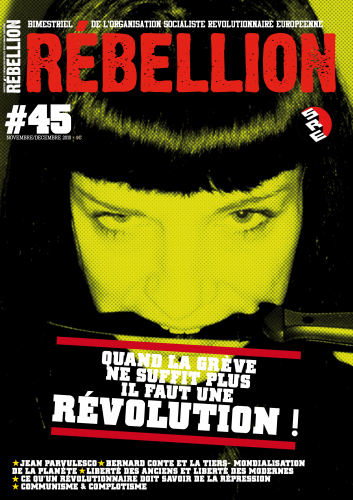
 El sitio (electrónico) WikiLeaks ha hecho un trabajo de salubridad pública al desvelar una gran cantidad de las vilezas de nuestros “grandísimos amigos americanos”. Quienes, por ejemplo, explotan a fondo –cuestión de juego limpio– el servilismo sarkozyano en beneficio propio (véase la página 4) (2).
El sitio (electrónico) WikiLeaks ha hecho un trabajo de salubridad pública al desvelar una gran cantidad de las vilezas de nuestros “grandísimos amigos americanos”. Quienes, por ejemplo, explotan a fondo –cuestión de juego limpio– el servilismo sarkozyano en beneficio propio (véase la página 4) (2).
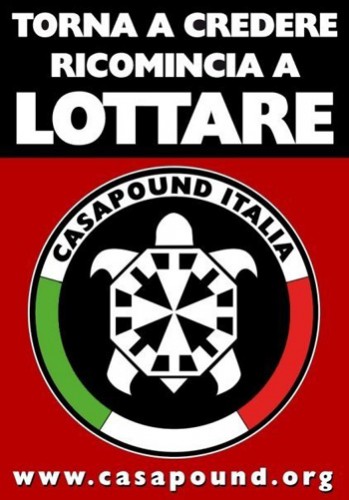


 (*) Article publié dans le dernier numéro de Rivarol (
(*) Article publié dans le dernier numéro de Rivarol (

